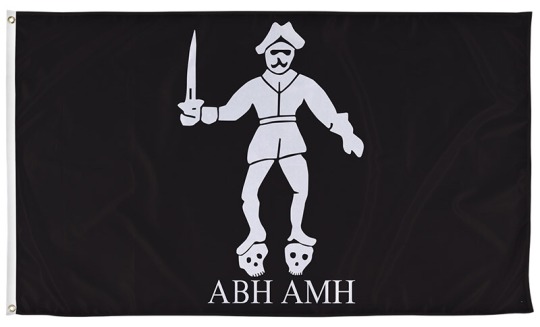#and it's all red rackham's treasure! the consistency!
Explore tagged Tumblr posts
Text





there IS good in the world
#the adventures of tintin#tintin#do i want to fly to belgium now just to be on this plane? maybe#and it's all red rackham's treasure! the consistency!#...though the moral of that story was 'really shoulda just stayed home
647 notes
·
View notes
Text
Top ten favorite male characters
Thank you to my lovely @danieldesario for the tag!!! This was harder than I thought it would be hahaha Also, these aren’t in any specific order
Alexander Claremont-Diaz (Red, White & Royal Blue) My boy, my disastrous, oblivious, smart boy who’s trying so hard not to fall in love even though he’s like the most romantic guy out there. I loved the whole book, but I loved it mainly because of Alex and how much I relate to him and how great his inner thoughts were (I mean Lilly, I commented live to you so you know hahahaha)
Edward Elric (Fullmetal Alchemist) omg my first crush EVER?? No but seriously, I love Edward, he has such a tragic story but he is an upstanding guy (while still being a jerk which is hilarious not gonna lie). He’s a kid who lived through so much traumatic things and has a strong will, I have like.... too many feelings about Edward. I know FMA is a famous manga but there’s a reason for that. If you have to read only one manga in your life, read this one. And then come talk.
Ron Weasley (Harry Potter) I mean, do I even need to explain? Ron is loyal, he’s quick on his feet, he’s hilarious and I love him. Not a day goes by when I’m not mad about what the movies did to his character, when I’m not mad about how most people see him as an annoying, useless friend, when in reality his character is complex and amazing.
Will Parry (His Dark Materials) Will is caring, he’s tough but mostly he cares SO MUCH. I mean, I will avoid spoilers here but.... Lilly you know my feelings about Will. I just love him.
John Murphy (The Hundred) The cockroach. Murphy has one of the most interesting character development of the entires series. I can’t say much without spoilers but his character arc is in my opinion very well handled (for the most part anyway), he’s, for me, one of the only characters whose story and personality have remained consistant throughout the whole series.
Jesse Pinkman (Breaking Bad) First of all, if you haven’t seen Breaking Bad, what are you doing with your life??? Second of all, Jesse is a character with such a heartbreaking story that I just want to hug him all the time. There is not a lot of characters out there that I call soft, but Jesse is. Again, trying to avoid direct spoilers, but go watch the series.
J.D. (Scrubs) Okay I realize that I never talk about Scrubs here but I looooove this TV show, and J.D. is such a great character, I love him!! He’s hilarious and goofy and he day dreams a LOT but he’s also caring and a good doctor.
Jack Sparrow (Pirate of the Carribean: Curse of the Black Pearl) Yes, I specify the exact movie. Because Jack in this movie is just *chef kiss*. His entrance in the sinking boat has me bursting out laughing every time I watch it. Every. Time. This movie in general is awesome but Jack’s character is like 90% of the awesomeness of this movie!
Kaz Brekker (Six of Crows) Because of course, Kaz would be here. I won’t launch into why I love his character, it would get embarrassingly long and emotional, but yeah, I love his character.
James Maguire (Derry Girls) The wee English fella. He’s just so sweet, how could you not love him?
Honorable mentions: Jack Rackham (Black Sails), Captain Flint (Black Sails), Rhysand (ACOTAR), Henry of Wales (Red, White & Royal Blue), Chandler Bing (F.R.I.E.N.D.S.), Connor Welsh (How to get away with murder), Alphonse Elric (Fullmetal Alchemist), Jim Hawkins (Treasure Planet)
#I'm pretty sure I'm forgetting a TON of great characters that I love#there are so many#I can't even imagine making this with female characters because there are too many of them omg
8 notes
·
View notes
Text










Source https://www.vispronet.com/blog/famous-pirate-flags/
Top 10 Most Famous Pirate Flags And Their Meanings by Chris Edwards
Almost since the end of the Golden Age of Piracy in 1720, pirates have captured the imagination of the public. When it comes to pirates, perhaps nothing has captured people’s attention more than one of the most famous pirate flags in existence, the Jolly Roger.
Pirates Symbols and Meanings
Symbol Meaning
Red Pirate Flag Warning sign for no mercy
Skull and Bones Death
Bleeding Heart Slow painful death awaits you
Edward Low (red skeleton) Torment with eventual death
Hourglass Symbol Time is running thin
Nude Pirate Pirates with no shame
Clothed Pirate Most likely stood for pirate captain
Lifted Drinking Glass A toast to dying or to Satan
Horned Skeleton Satan
Weapons Incoming fight
A Short History of the Jolly Roger Pirate Flag
While pirates had been around as early as 1650, the first Jolly Rogers weren’t flown until after the Golden Age of Piracy. These first flags, flown by Bartholomew Roberts and Francis Spriggs, looked nothing like what we would expect a modern Jolly Roger to look like.
For example, Francis Spriggs’ flag was a red skeleton on a black flag. Bartholomew Roberts’ first flag was a caricature of him sharing an hourglass with Death.
No matter how they looked, all Jolly Rogers had one purpose: to send a message. They announced to anyone who saw them that the crew of the ship was pirates and that if they surrendered, they’d be given mercy.
The earliest use of a black flag with a white skull and crossbones is credited to the French pirate captain Emanuel Wynn in 1700. Wynn’s flag also used an hourglass image to symbolize that whoever saw it was running out of time. This hourglass image was then picked up by other pirates and appears on several other flags.
The skull-and-crossbones design of the Jolly Roger flag has been used in many different styles and variations. Many different pirates have used it, including “Black Sam” Bellamy, Christopher Condent and Edward England. We’ll take a look at the top ten most famous real pirate flags of all time.
10. Francis Spriggs/Edward Low
Francis Spriggs / Edward Low Flag, 1721 – 1724
Spriggs’ flag was one of the first flags to be called a Jolly Roger. However, it lacks almost all of the symbols we’ve come to associate with Jolly Rogers. The design of Spriggs’ flag, a red skeleton on a black flag, doesn’t even originate from him. Instead, it comes from one of Spriggs’ former sailing partners, Edward Low.
Although it’s unknown when Spriggs began his career of piracy, he and Low had split by Christmas of 1724. Spriggs then took his ship, the Delight, and set sail for the Caribbean.
Francis Spriggs was still active by April of 1725, when he set some of the crew from his Caribbean conquests free on the island of Roatan off the northern coast of Honduras. He and his crew captured several more ships around Bermuda and Saint Kitts later that year. His ultimate fate after 1725 is unknown.
9. Stede Bonnet, “The Gentleman Pirate”
Bonnet’s flag is traditionally thought to have been a skull over a horizontal long bone and between a heart and a dagger (shown below). However, there is no contemporary source for this having been his flag. The earliest source listing this is from an unknown, undated manuscript that was gifted to the Maritime Museum of Britain in 1939.
Captain Stede Bonnet, “The Gentleman Pirate Flag”, 1717 – 1718
Contemporary sources say that Bonnet flew either a dark red flag or a flag with a death’s head on it. If Bonnet did indeed use the flag that popular culture had associated with him, it would have had a very clear meaning. The heart and dagger represented life and death, with the skull and bone being a crude approximation of a scale.
8. Christopher Moody
Moody is yet another pirate who completely eschews the standard conventions of the Jolly Roger that we’ve come to know. Operating from 1713 to 1718 in the waters around North and South Carolina, Moody was a particularly bloodthirsty pirate. His flag, shown below, only confirms that.
Captain Christopher Moody, “No Quarter Given Flag”, 1713 – 1718
Instead of the traditional white designs on a black background that most pirates favored, Moody chose designs picked out in gold on a red background. The use of a red background is particularly ominous. Among pirates, privateers and naval captains, flying a red flag often meant that no quarter would be given.
Add this to the designs on Moody’s flag — an hourglass with wings, representing time flying away; an arm holding a dagger; and a gold skull with crossed bones — and you get a flag that is particularly chilling to see coming closer to you on the horizon.
7. Emanuel Wynn
Captain Emanuel Wynn, The First Pirate Flag
Wynne is one of the first pirates to fly a Jolly Roger as we know it today. His flag consisted of a white skull over crossed bones with an hourglass underneath. This was a symbol to anyone who saw it that time was running out and that they could only avoid death by surrendering.
One of the few contemporary descriptions of Wynn’s flag comes from Captain John Cranby, who commanded the HMS Poole. The Poole attacked Wynn off the Cape Verde islands in July of 1700. Cranby’s description is as follows: “a sable ensign with cross bones, a death’s head, and an hour glass.”
Following the attack by the Poole, Wynn left the Cape Verde islands for the Caribbean and more profitable raiding opportunities, attacking British and Spanish shipping. His eventual fate is unknown.
6. John Quelch
Captain John Quelch, 1703 – 1704
When it comes to the pirate flags on the list, John Quelch’s flag stands alone. That’s because it isn’t really a pirate flag at all: it’s the national flag of England. Before beginning his career of piracy, Quelch sailed on the English privateer ship Charles as its lieutenant. In July of 1703, the crew mutinied and elected Quelch as the new captain.
Quelch immediately sailed south for the Portuguese colony of Brazil. By the time the crew returned to their original port of call, they had over £10,000 in goods in the hold. Quelch’s prize is equivalent to about $2,416,024 today.
However, the Portuguese were not valid targets for Quelch to privateer. He was arrested and sentenced to death through an Admiralty trial — the first of its kind in America. Quelch was hanged on June 30, 1704 in Boston.
5. Thomas Tew
The flag of Thomas Tew eschews most of the standard Jolly Roger imagery except for the black flag background. In its place, his flag is an arm holding a cutlass — one of the most universal symbols of violence out there
Captain Thomas Tew, “The Rhode Island Pirate”, 1692 – 1695
Tew’s use of a cutlass was a pretty unambiguous warning. He wouldn’t hesitate to kill anyone who stood in his way, so his enemies should just surrender. The warning was well-heeded: even though Tew was only a pirate for three years (1692 – 1695) he had managed to amass a wealth of about £8,000 ($1,651,137.49 today) by the time he died in 1695.
4. “Calico Jack” Rackham
Rackham was made famous thanks to his portrayal in the Starz TV show “Black Sails” and the video game “Assassin’s Creed IV: Black Flag”. However, he was not actually active as a pirate for very long — only two years (1718 – 1720).
Captain Calico Jack Flag, 1718 – 1720
The first record of Rackham participating in piracy comes from 1718, when he was quartermaster aboard Charles Vane’s ship Ranger. After Vane was removed from captaincy of the Ranger, Rackham was voted to the captaincy. He would command several vessels throughout his time as a pirate, most notably the Kingston. No matter which ship he commanded, Rackham would use the exact same flag: a skull above a pair of crossed swords (shown above).
3. Henry “Long Ben” Every
One of the more famous pirates on this list, Every captured the attention of both contemporary and modern audiences. Although he was only active between 1694 and 1696, Every holds the record for the largest heist of treasure ever pulled in by one pirate crew.
Captain Henry “Longben” Every (Evory / Avery / Henry Bridgeman)
In a raid on Mughal merchant ships in 1695, Every and his crew pulled in a treasure worth 300,000 to 600,000 British pounds — the equivalent of 50 to 120 million US dollars today. Following the raid, Every largely vanished from public life. All records of his location and activities cease to exist after 1696 — including what he did with his shares of the Mughal treasure.
2. Bartholomew Roberts
Even though he was only a pirate for three years, Bartholomew Roberts is perhaps the most successful pirate on this list. From 1719 to 1722, Roberts captured over 400 prizes.
Roberts began his career of piracy June of 1719. The ship he was on was captured by pirates under Howell Davis. The pirates forced Roberts and several of his men to join them. Then they set sail for the island of Principe off the west coast of Africa.
At Principe, Captain Davis was shot dead by the Portuguese garrison, who had found out that he and his crew were pirates. With Davis dead, a new captain had to be elected — Roberts.
Although he initially had not wanted to join the pirates, Roberts accepted his promotion to captain. He reasoned that if he was going to be a pirate, it was better to be captain than a common man.
After his election to captain, Roberts drew up his first flag (shown below), which showed him together with Death, holding an hourglass.
Captain Bartholomew Roberts, 1719 – 1720
Roberts is the only pirate to have used two flags, both of them famous pirate flags in their own right. While the first came soon after his election to captaincy, the second wouldn’t come until February of 1720. Roberts found himself pursued by two pairs of sloops, one from Barbados and one from Martinique. He swore vengeance against the inhabitants of both islands and had a new flag drawn up (shown below). On it, he was standing over a pair of skulls: one labelled ABH (A Barbadian’s Head) and the other AMH (A Martiniquian’s Head).
Bartholomew Roberts ABH AMH Flag, 1720 – 1722
1. Edward “Blackbeard” Teach
Without a doubt the most famous pirate on this list, Edward Teach, also has the distinction of having one of the most famous pirate flags on this list.
He has become who most people think of when they hear the word “pirate”. Teach and his first ship, Queen Anne’s Revenge, have been made famous thanks to their portrayal in media such as “Sid Meier’s Pirates!” and “Assassin’s Creed IV: Black Flag”. The Blackbeard flag, shown below, is almost as famous as Blackbeard himself is.
Captain Edward Teach, “Blackbeard” Flag, 1716 – 1718
The Blackbeard Flag Meaning
Depicting a skeleton raising a toast while spearing a heart, the Blackbeard flag is almost certainly meant to intimidate one’s enemies. However, there is not as much information on what the different elements of Blackbeard’s flag mean.
Historians dispute that the flag publicly accepted as Blackbeard’s is actually his. The first mention of the flag that would later be accepted as Blackbeard’s is in 1912. The most widely-accepted contemporary source, “A General History of the Pyrates,” doesn’t even list Blackbeard as having a particular flag. The woodcut of his ship included with the book is simply flying a regular flag.
This hasn’t stopped the public from embracing it, however. The state of North Carolina flew Blackbeard’s flags from its ferries in 2018 to celebrate the 300th anniversary of the battle of Ocracroke Island and Blackbeard’s death.
Sources
Infamous Pirates — Francis Spriggs: https://www.goldenageofpiracy.org/pirates/francis-spriggs.php
At The Point Of A Cutlass: https://books.google.com/books?id=VWG0AwAAQBAJ&printsec=frontcover#v=onepage&q&f=false
Francis Spriggs: http://www.thepirateking.com/bios/spriggs_francis.htm
The Tryals of Major Stede Bonnet and Other Pirates: http://lcweb2.loc.gov/service/lawlib/law0001/2010/201000158861859/201000158861859.pdf
Pirates — Christopher Moody: https://www.crwflags.com/fotw/flags/pir-mody.html
The Biography of John “Calico Jack” Rackham: https://www.thoughtco.com/biography-of-john-calico-jack-rackham-2136377
The Trials of Joseph Dawson, et al: https://catalog.loc.gov/vwebv/search?searchCode=LCCN&searchArg=19011844&searchType=1&permalink=y
Henry Every’s Bloody Pirate Raid: https://www.history.com/news/henry-everys-bloody-pirate-raid-320-years-ago
A General History of the Pyrates: From Their First Rise and Settlement In The Land Of Providence To The Present Time: https://books.google.com/books?id=oipEAQAAMAAJ&pg=PA230#v=onepage&q=AMH&f=false
Blackbeard’s pirate flag to fly on North Carolina ferries: https://www.pilotonline.com/news/article_6d13be10-39a1-11e8-952d-4b0eaa537028.html
#pirates#history#aval history#maritima#maritime history#graphic design#flags#pirate flags#skulls#skeletons#cutlass#swords#boats#calico jack#jack rackham#blackbeard#edward teach
7 notes
·
View notes
Text
Writing has been #difficult this week. I was gonna write about my own mental state as part of Mental Health Awareness Month, but apparently I'm not well enough to be able to write that stuff out for strangers yet. Moving on, then.
Today marks the first day of US Pride Month, so the five media posts this month are all gonna be queer as hell. And, like, happy; no dead queers here, so buckle in that rainbow seatbelt, cause this is gonna be one gay-ass ride.
Today's media is some 38 episodes long, and both diverse and diversely queer. It's got transformative work, it's got early eighteenth-century politics, it's got pirates, it's got treasure, it's got lesbians and bi women and genderqueer historical figures, it's got long-term committed poly folk, it's got blood, it's got gore, it's got amaaaazing black women ruling their own communities with care and compassion, it's got disabled folk being given focus and allowed agency, it's got conspiracies and alliances and mentoring between people of all genders and generations, it's got really lovely cinematography and music, it's got Toby Stephens' fabulous micro-expressions.
That's right, gentlefolk, today's media consumption is Black Sails. This is more of a weekend binge project, or a month-long thing if you're inclined to be sensible about things. It is also aimed at creasedknees, because I want her to watch it so we can squee.
Black Sails is a prequel of sorts to Treasure Island, dealing with the adventure that leads to the discovery and burial of that treasure. It takes up Captain Flint (Toby Stephens), Billy Bones (Tom Hopper) and of course John Silver (Luke Arnold) from the novel, and peoples itself with various fictional and fictionalised historical figures of the time, most significantly Jack Racham, Anne Bonny, and Charles Vane, who function as foils to our heroes throughout the show. I'm going to talk about them in just a bit but first Our Hero Captain James Flint, whom I adore entirely. (I want to like John Silver, but as in the novel Silver is a marvelously done character, without ever being someone it's safe to trust wholeheartedly or really at all.)
Captain Flint kills someone in the very first episode, and he doesn't actually get any nicer. (Even that killing is preceded by the pirate crew taking a ship with due savagery, so if you dislike gore I sadly cannot recommend watching this series.) In fact he escalates considerably, up from individual acts of piracy to cannonades directed at cities, and the show doesn't particularly gloss over this violence or the human cost entailed. Flint is the most consistently Slytherin character I have ever seen (and the fact that he resembles his mother to the last and most infinitesimal degree is often jarring): a man of vaulting ambition and enormous rage, with a capacity to hold onto grudges undiminished over a decade and longer. I love him. I love him absolutely, and not just because he is so wonderfully tender with all the women around him without ever doubting or trivialising their personhoods or capacity for doing what they set hands and minds to, though that is admittedly a very large part of why. Flint is always furious, always hurting, always ruthless with himself and his crew and associates, groaning away from a primal wound.
Primal wounds are maybe a good way to talk about this show without showering people with spoilers, as so many of the main characters have such wounds, inflicted by living in systems characterised by ills ranging from slave trafficking, bonded labour, debt prisons, early marriage, sexual violence, weaponised misogyny and institutionalised homophobia, and too often and deeply realistically by the rutted interstices of such injustice. Again realistically, the show's leads do not emerge from these experiences as noble crusaders, but rather as a den of Slytherins desperate to get ahead in whatsoever manner they can, and find whatever they think of as safe harbour: from Max (one of the characters original to the show and superbly played by Jessica Parker Kennedy) who wants to leave behind her miserable childhood and exploited adulthood by gaining entry into the Big House where life is soft and easy, to Madi who wants to lead her enslaved people into liberty, to Rackham who wants to make his mark on the world through narrative instead of having his story told as one of crushing poverty and debt. Our villains have stories as well, but even the few delineated in any detail are effectively subsumed in the institutional machines of which they are privileged cogs.
But important as all these stories are in motivating and substantiating the show, Flint's is the wound at the core of Black Sails. There are problems with this centering of white queer trauma in a show that, set in West Indies, could and almost certainly ought to have instead centered PoC and enslavement. It does deal with these issues, and inarguably allows Max and Madi Scott together as much space as Flint. Still, one has to accept at the start that this is a show about queer resistance that includes other aspects of marginalisation, rather than being a show of marginalised resistance against the institutions perpetrating and perpetuation said marginalisations. Significantly, Max and Mr. Scott are not initially characterised as being interested in working towards liberation, but the viewer complaints about the slow reveal of Mr. Scott's plans in this regard seem as facile as the screaming about Flint being queer.
I can go on about this show endlessly, as T, poor child, can easily testify, because I love everything about it, from the cinematography, to the gore, to the wlw relationships and just Anne Bonny queen of my heart and every violent impulse. And I do think that if I was a better person I would dwell longer on the gorgeous and deeply complex relationships between Charles Vane, Jack Rackham Anne Bonny and Max, and how I want them all to be alive and married but for Charles and Max to never ever ever touch, OR for Charles to scrub himself raw and bleeding before he's ever allowed to be near Max, and also Max's brilliance and subtlety and compassion and ruthlessness, how she's clung on to kindness in a deeply unkind existence and how that in no way signifies a lack of Nature, red in tooth and claw, and the way her change of clothing reflects and reiterates her change of status and and just. Her faaace, her golden glowing beauty and that heart-stopping smile. But the thing is my interests were set early and I imprinted on exactly one sort of character as a child and I continue to love them more than anything, and much as I adore Max, and much as I worship Madi Scott's regal compassion and strategic mind and her trust in and friendship with Flint and her renewed affection for Eleanor (whom I love also! and who is so sharp and such a merchant-prince and so tramelled by her gender), well. Look. I love Flint. I love his anger, and his sorrow, and his everything. I think it's remarkable how Flint’s story goes from Achillean (my lover is dead I will go to war, my lover is dead I will burn down this town, fight this empire, challenge fate/gods) to Odyssean (I am home from the wars and here is my lover who has longed for me as I for him). But what I love the most is how in a story that is almost entirely about stories and how and when and by whom they are told, Flint gets to say, angry and wounded and betrayed again,
This is how they survive. You must know this. You're too smart not to know this. They paint the world full of shadows... and then tell their children to stay close to the light. Their light. Their reasons, their judgments. Because in the darkness, there be dragons. But it isn't true. We can prove that it isn't true. In the dark, there is discovery, there is possibility, there is freedom in the dark once someone has illuminated it.
I love it so much, so intensely, so much more than Rackham's playing around with narratival style and truth, I love my sad bi ginger pirate uncle, and so would you if you gave the show a chance. It's all on directseries.net, at fairly good quality, with subtitles and everything. Please pretty please?
5 notes
·
View notes